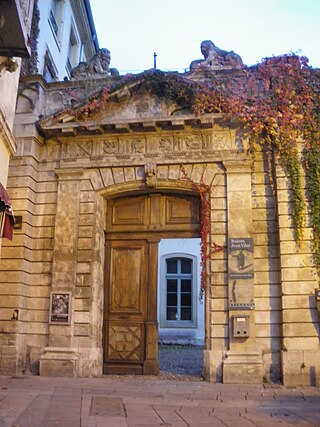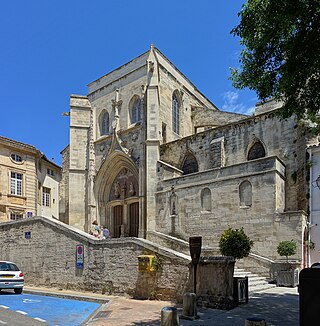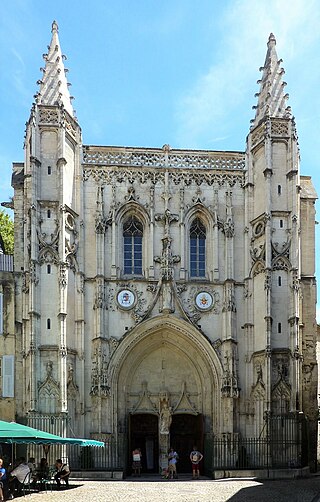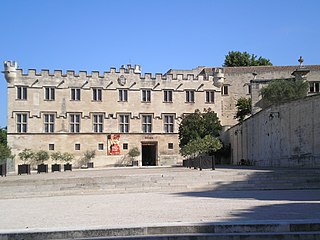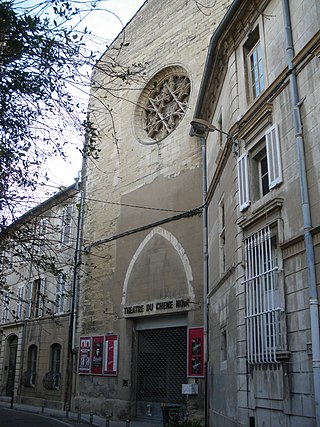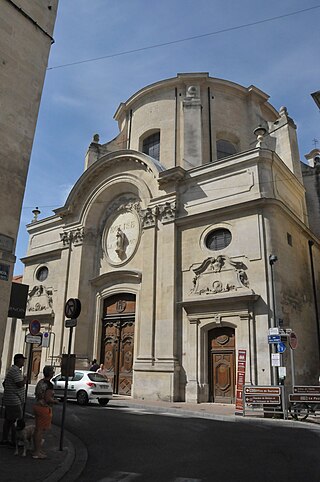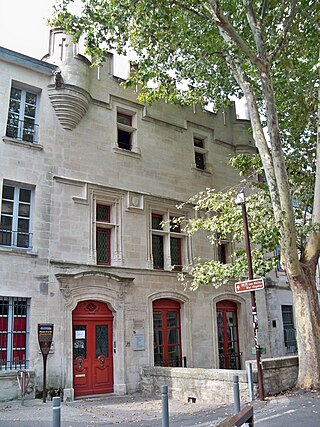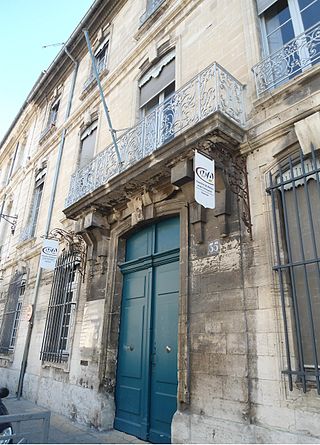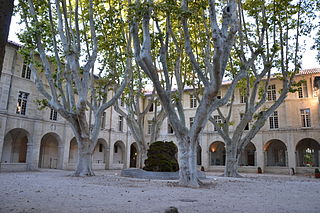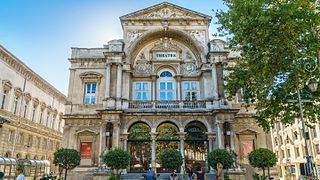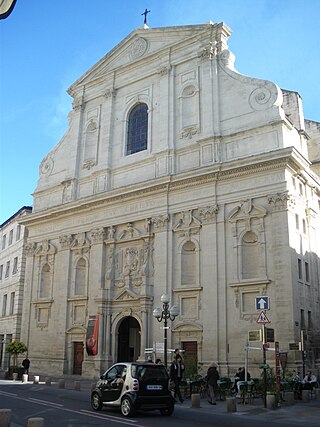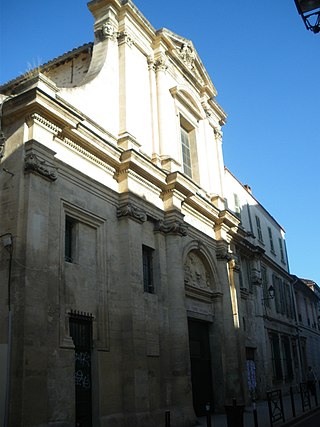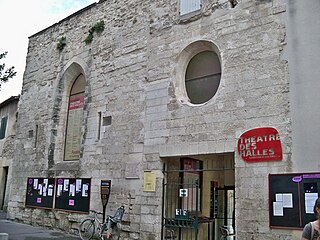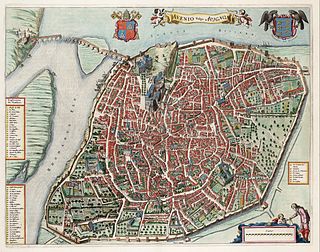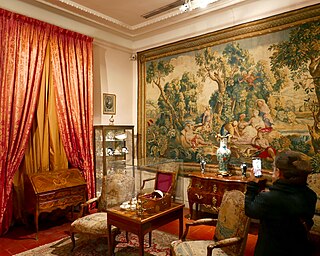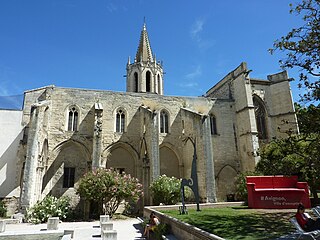23 Sights in Avignon, France (with Map and Images)
Legend
Premium Sights
Book tickets, guided tours and activities in Avignon.
Guided Free Walking Tours
Book free guided walking tours in Avignon.
Welcome to your journey through the most beautiful sights in Avignon, France! Whether you want to discover the city's historical treasures or experience its modern highlights, you'll find everything your heart desires here. Be inspired by our selection and plan your unforgettable adventure in Avignon. Dive into the diversity of this fascinating city and discover everything it has to offer.
Sightseeing Tours in AvignonActivities in Avignon1. Caravelle Guyane

The Sud Aviation SE 210 Caravelle is a French jet airliner produced by Sud Aviation. It was developed by SNCASE in the early 1950s, and made its maiden flight on May 27, 1955. It included some de Havilland designs and components developed for the de Havilland Comet. SNCASE merged into the larger Sud Aviation conglomerate before the aircraft entered revenue service on April 26, 1959, with Scandinavian Airlines System (SAS); 282 were built until production ended in 1972. It was ordered by airlines on every continent and operated until its retirement in 2005.
2. Pierre Boulle
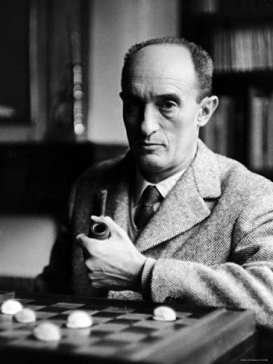
Pierre François Marie Louis Boulle was a French author. He is best known for two works, The Bridge over the River Kwai (1952) and Planet of the Apes (1963), that were both made into award-winning films.
3. Maison Jean Vilar
The Maison Jean Vilar, inaugurated on 18 July 1979, is an archive dedicated to the work and thought of Jean Vilar which offers shows, readings, meetings and exhibitions. It also carries the history of the Festival d'Avignon to the present day, that of the "OFF" and of various cultural structures in the Region. The dynamics of this place were initially based on the alliance of four entities: the Jean Vilar Association, the City of Avignon, the National Library of France and the Ministry of Culture and Communication, brought together by a quadripartite agreement signed for 30 years on December 12, 1977. The last agreement expired in 2017.
4. Église Saint-Agricol
The Collegiate Church of Saint-Agricol in Avignon is a religious building built in the seventh century by Saint Agricol. Elevated to the rank of collegiate church by John XXII in 1321, it is located in the historic center of Avignon (Vaucluse).
5. Chapelle des Pénitents Noirs
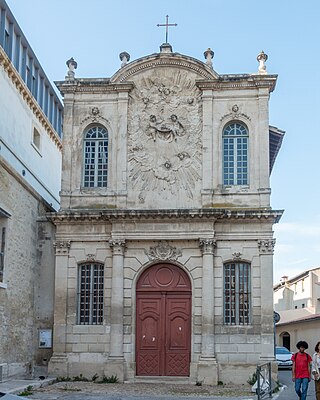
The Chapel of the Black Penitents is located in Avignon (Vaucluse) in the rue de la Banasterie. It was home to one of the major brotherhoods of the papal city. The "Grey Penitents" were the first of a long series of Avignon penitents. Then came the "Black Penitents", which were founded in 1488 by a group of Florentine nobles, the "White Penitents", a brotherhood founded in 1527 by thirteen Avignonnais, the "Blue Penitents", formed in 1557 by a dissidence from the other brotherhoods. Then, at the end of the sixteenth century, the "Black Penitents of Mercy" were born. The movement continued with the foundation of the "Purple Penitents" (1622), then the "Red Penitents" (1700). The Revolution put an end to this proliferation and today only the "Grey Penitents" and the "Black Penitents" remain in Avignon.
Wikipedia: Chapelle des Pénitents noirs (Avignon) (FR), Website
6. Basilique Saint-Pierre
The Basilica of Saint-Pierre d'Avignon is a Gothic-style Catholic basilica located in Avignon on the Place Saint-Pierre. Built on the site of a first construction of the seventh century, its current reconstruction dates from 1358.
7. Hôtel de Salvati-Palasse
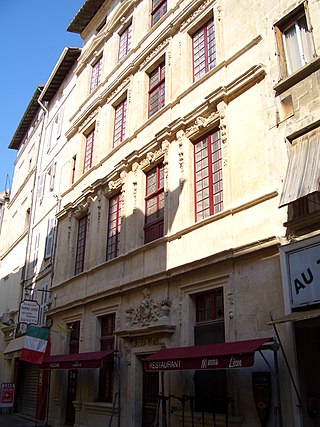
The Vaucluse Academy, founded in 1801, is the oldest association in Vaucluse. This learned society is a continuation of the Academy of Emulators of Avignon founded in 1658, it was recognized as a public utility in 1919. The Académie de Vaucluse, which is generalist, gives priority to local history in all its aspects. It plays an important cultural role through the activity of its members, its periodicals, its exhibitions and conferences on the history and archaeology of the Vaucluse. In addition to its publishing activities, it is the custodian of documentation collections consisting of local works and regional scholarly journals, biographies, reprints, and monographs of towns and villages. Beautiful library, with in particular the publications of learned societies in connection with the Academy of Vaucluse.
8. Musée du Petit Palais
The Musée du Petit Palais is a museum and art gallery in Avignon, southern France. It opened in 1976 and has an exceptional collection of "primitives" and early Renaissance paintings from Italy, which reunites those of the collection of Giampietro Campana deposed by the Musée du Louvre as well as paintings of the Avignon school deposed by the Musée Calvet. It is housed in a 14th-century building at the north side of the square overlooked by the Palais des Papes. The building, built in the early 14th century as the residence of the bishops of Avignon, was made a UNESCO World Heritage Site as part of the historic center of Avignon in 1995.
9. Théâtre du Chêne Noir
The Théâtre du Chêne Noir is a theatre in Avignon, located in the former chapel of the Abbey of Sainte-Catherine d'Avignon (a historic monument listed since 1974), located on rue Sainte-Catherine, behind the Palais des papes. Gérard Gelas' company moved there in 1971. Together with André Benedetto, he was a pioneer of the Festival Off.
10. Chapelle de l'Oratoire
The chapel of the Oratory of Avignon is located in the rue Joseph-Vernet. This eighteenth-century building was begun in 1713, rebuilt in 1730 and finally completed in 1749. It has been classified as a historical monument since 1912. It takes its name from a congregation, the Society of the Oratory of Jesus.
11. Hôtel de Villeneuve-Martignan
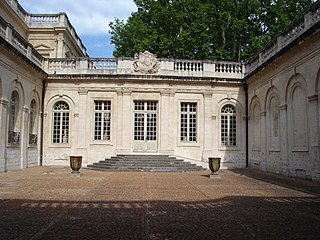
The Calvet Museum is the main museum in Avignon. Since the 1980s the collection has been split between two buildings, with the fine arts housed in an 18th-century hôtel particulier and a separate Lapidary Museum in the former chapel of the city's Jesuit college on rue de la République. It is one of the museums run by the Fondation Calvet.
12. Statue du Millénaire capétien
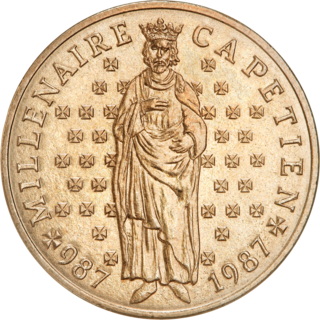
The Capetian Millennium is an event organized in 1987 in France to celebrate the 1000th anniversary of the accession of Hugues Capet. It was by decree of the President of the Republic, François Mitterrand, and under his high patronage that the Committee for the Celebration of the Millennium of the Accession of Hugues Capet was set up. It is chaired by the Director General of the Archives of France, Jean Favier.
13. Maison du IV de Chiffre
The Maison du Quatre de Chiffre or Maison du IV de Chiffre is one of the oldest residences in Avignon, located at the corner of Rue des Teinturiers and Rue Guillaume Puy. This Gothic house, built in 1493, had an "IV de Chiffre" sculpted between the three windows on the first floor. These acronyms, which have now disappeared during a restoration, were found in no. 53 of "La Farandole", an Avignon magazine published on 21 October 1913.
14. Hôtel de l'Espine
The Hôtel de l'Espine is a former private mansion in Avignon, built on the site of a convent founded by the Dominican nuns of Sainte Praxède in Avignon from the fifteenth century, and of which only rare remains remain. It now houses the Chamber of Trades and Crafts of Vaucluse.
15. Chapelle Saint-Louis
The Jesuit novitiate is a building built in Avignon in the Comtat Venaissin at the end of the sixteenth century, to serve as a house of religious formation for the novices of the Society of Jesus. When the Jesuits were expelled from France (1768), the building passed into other hands and became the property of the city of Avignon in 1852. In 1987, the premises were rehabilitated to allow the opening of a hotel and the organization of cultural or tourist activities. Since 1950, the buildings and the cloister have been listed as Historic Monuments.
Wikipedia: Noviciat des Jésuites d'Avignon (FR), Url Festival, Url Mass
16. Opéra Grand Avignon
The Opéra d'Avignon is an opera house located in Avignon, France, that has been in operation for almost two centuries. The initial opera house was constructed in 1824–1825, and opened with its inaugural performance on 30 October 1825. The original opera house was destroyed in a fire on 26 January 1846. The current opera house was built in 1846–1847 and was designed by architects Léon Feuchère and Théodore Charpentier. In 1988, it was designated as a monument historique.
17. Musée Lapidaire
The Lapidary Museum is a lapidarium-museum in Avignon, France. It has housed the classical Greek, Etruscan, Roman and Gallo-Roman sculptures and objects of the Calvet Museum since the 1980s. They are both run by the Fondation Calvet. As well as exhibiting the museum's core collections, it also mounts summer temporary exhibitions, conferences and networking events, particularly for scholars.
18. Chapelle du Verbe Incarné
The Chapel of the Incarnate Word is a modest-sized former religious building, located at 21 rue des Lices, in the historic center of the commune of Avignon, capital of the French department of Vaucluse. Since 1998, the chapel has been used as a performance hall during the Festival d'Avignon.
19. Musée Angladon
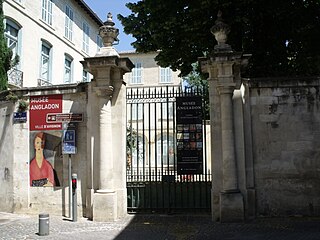
The Angladon Museum - Jacques Doucet is a museum at 5 rue Laboureur in Avignon. It is based in the hôtel de Massilian, a former hôtel particulier built in the 18th century. The museum was established in 1996 according to the wishes of Jean and Paulette Angladon-Dubrujeaud, heirs to the widow of the Parisian couturier Jacques Doucet (1853-1929). Its collections includes artworks from the 18th to 20th century.
20. Théâtre des Halles
The Théâtre des Halles is a French theatrical structure located in Avignon, in the Vaucluse. It was created in 1983 under the impetus of the director Alain Timár. A permanent stage and venue for the Avignon Off Festival, the Théâtre des Halles is located within the city walls, near the Place Pie and the Halles d'Avignon, the Provençal market from which it takes its name.
21. Collection Lambert
The Dictionary of the Streets of Avignon is a dictionary of the streets of the commune of Avignon, a commune in the Vaucluse department in the Provence-Alpes-Côte d'Azur region in southeastern France.
22. Musée Louis Vouland
The Louis-Vouland Museum in Avignon (Vaucluse) presents, in a private mansion in Villeneuve-Esclapon, a rich collection of decorative arts representative of the seventeenth and eighteenth centuries with Parisian furniture, earthenware from the Midi, goldsmith's work, tapestries and paintings.
23. Temple Saint-Martial
The Temple Saint-Martial d'Avignon is a Protestant place of worship located at the corner of rue des Lices and rue de la République in Avignon. The parish is a member of the United Protestant Church of France.
Share
How likely are you to recommend us?
Disclaimer Please be aware of your surroundings and do not enter private property. We are not liable for any damages that occur during the tours.
